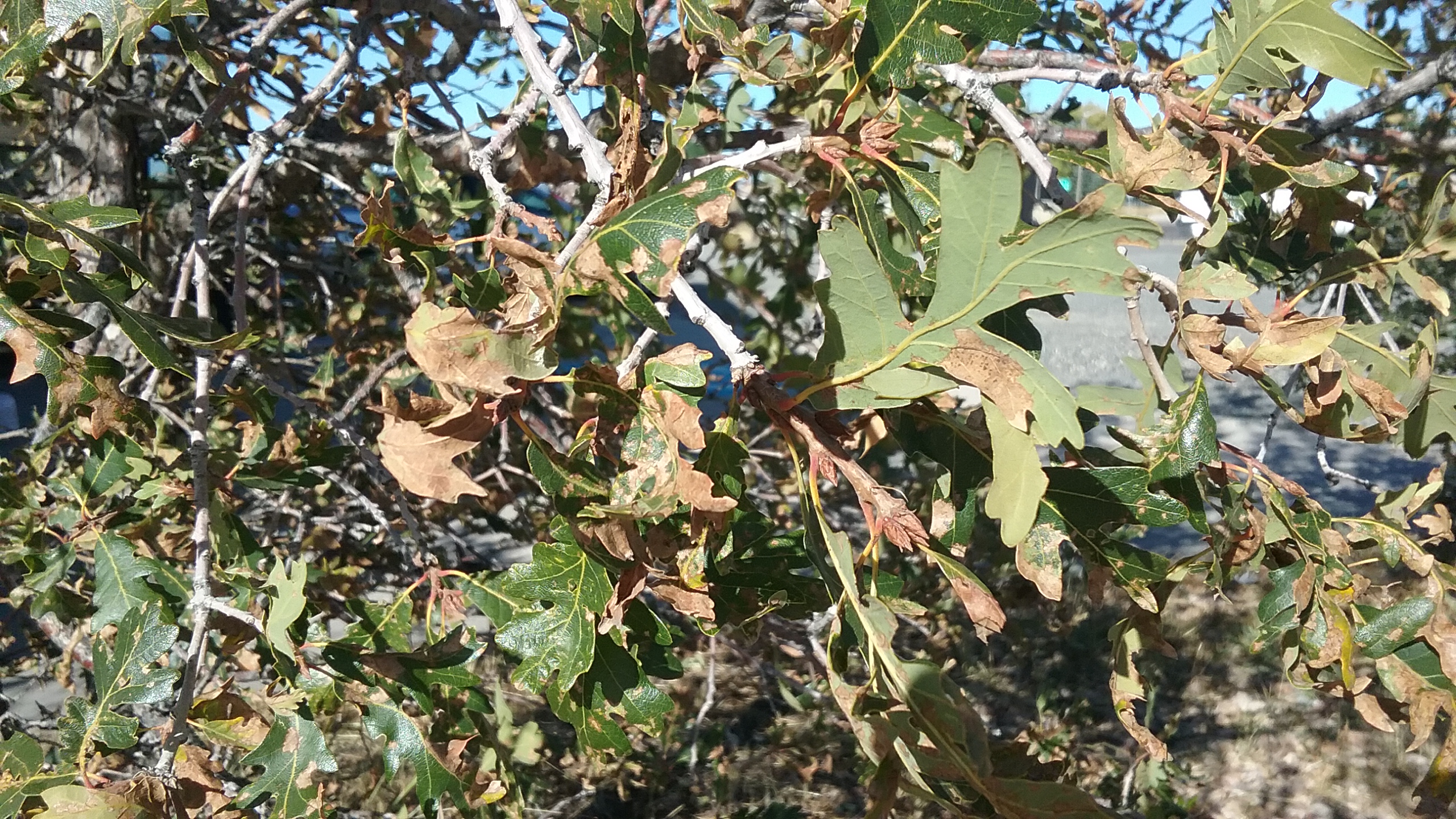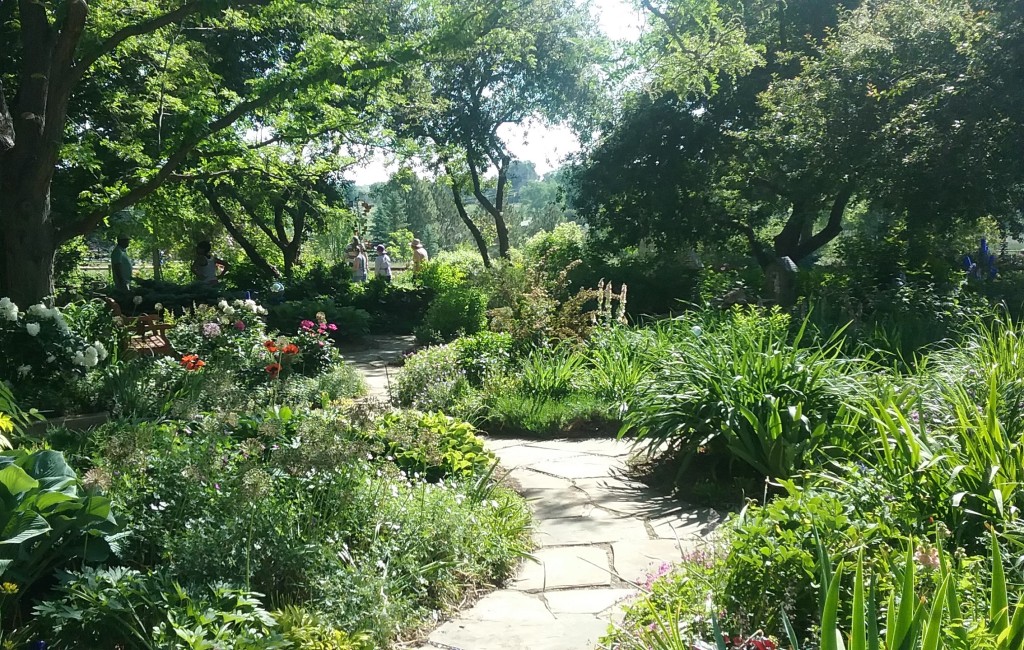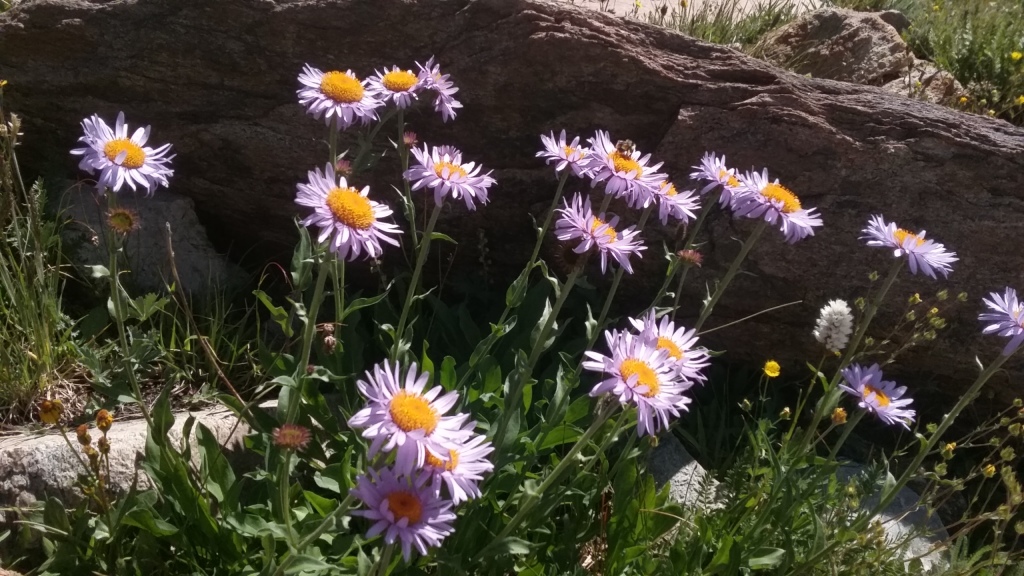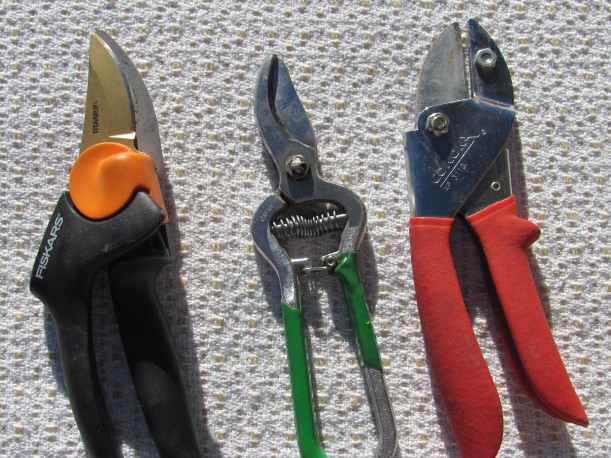
Published Mar. 13, 2021, in the Wyoming Tribune Eagle, “Horticulturist explains best practices for shrub pruning.”
By guest columnist Jessica Friis, horticulturist at Cheyenne Botanic Gardens
Shrubs are much more forgiving of pruning than trees. Pruning shrubs is more for aesthetic purposes.
Since trees get big, and the trunk and main branches are supporting most of the tree’s weight against environmental stresses like wind and snow, structural pruning is important. It prevents limbs from breaking and ensures that the trunk develops strength as the tree reaches mature size.
Shrubs, on the other hand, send multiple shoots out from ground level and aren’t supporting as much weight, so structural pruning is not as necessary.
Some of the pruning rules for trees also apply to shrubs. Dead wood should be removed–unless your shrubs are being used as a windbreak. In that case, you can leave the dead wood to provide more wind resistance.
Remove crossing branches to prevent rubbing and fusing, but don’t remove more than a third of the total canopy during the growing season. For safety reasons, remove branches that touch structures, block views for drivers, and obstruct public sidewalks and streets.
Winter is a great time to prune deciduous shrubs. You can see the branches better (but see notes below on blooming shrubs). Cuts should be made at ground level if removing the entire stem, or just above a bud or secondary branch if removing only part of it.
Pruning for aesthetic reasons
Pruning out the older, browner stems of red-twigged dogwood encourages the growth of younger, brighter-colored shoots.
But the most common reason people trim their shrubs is to control their size and shape. While shearing, the practice of cutting off the tips of branches with hedge clippers to produce a formal shape, is tolerated by some shrubs, I don’t highly recommend it, especially in Cheyenne.
Shearing is not necessary in most landscapes and it only cuts off the new growth. The middle of the shrub accumulates dead branches which stop producing leaves when they are no longer receiving enough light. Then, if an early or late frost kills a patch of tender new growth, or a broken branch due to a heavy snow removes a chunk of the shrub, you end up with a gaping hole that may take years to fill back in, or never fill in at all.
I recommend paying attention to the mature size of the shrub and selecting those that will fit into your landscape. For example, some lilacs can grow to be 10 feet tall, so don’t plant them in a place where you want a 4-foot tall shrub. If you do need to control the size of a shrub, cut the taller stems back at ground level, leaving the shorter, newer stems (and remembering the one-third rule).
Some shrubs can be cut completely back to the ground if they need to be rejuvenated, but research first to make sure your shrub will tolerate it, and make sure the plant is properly irrigated and fertilized so that it has the energy and nutrients needed to grow back.
Pruning for pest control and plant health
Sometimes there are pests that prefer older wood, like the lilac borer, so it is recommended to cut the older, thicker stems at ground level to prevent the pest from invading your lilacs.
For shrubs that are susceptible to powdery mildew and other fungal infections, thinning out some of the stems to promote air circulation around the leaves will help.
Older shrubs that are not irrigated should be pruned very sparingly. Removing the dead wood is all that should be done during the growing season.
In general, removing up to a third of the older stems at ground level to make room for newer, healthier shoots will improve the look and health of most shrubs, so this is the best practice to start with. Dead limbs don’t count as part of the third, so feel free to remove those at any time.
Pruning to promote blooming
If you have shrubs that bloom, it’s important to understand what type of wood produces the flowers.
In some shrubs, like lilacs, mock orange and viburnum, the flowers are produced on wood that grew the previous year. So, if you prune the shrub before it blooms, you will reduce the number of flowers you get that year. With those shrubs, it’s best to prune as soon as possible after the blooms have faded, to give time for new growth that will provide next year’s flowers. Usually, the shrubs that bloom early in the growing season are blooming on last year’s wood.
Shrubs that flower on new wood, like elder and potentilla, produce flowers on wood that has just grown and can be pruned any time, but may produce more flowers if they are pruned in the winter or early spring.
Some shrubs–including roses, hydrangeas and spirea—have varieties that fall into both categories, so you’ll need to know which type you have. If you are unsure, my advice is to prune right after the blooms are finished, just to be safe.
Colorado State University Extension has a list of flowering shrubs and pruning recommendations in publications at https://extension.colostate.edu/ as does the University of Wyoming Extension at https://www.wyoextension.org/publications.
Guest Columnist Jessica Friis is a horticulturist for the Paul Smith Children’s Village at the Cheyenne Botanic Gardens. This column will be included in the book due out this growing season, “Cheyenne Garden Gossip: Locals Share Secrets for High Plains Gardening Success.” The book is a compilation of columns on this website.













